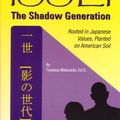With Japan’s era of isolation ending with the Tokugawa Shogunate in the late 1800’s, its era of diaspora began. During the Meiji restoration, changes in Japanese state policies such as increased taxes and mandatory military service, along with the need to escape economic hardships forced many people to emigrate. The most notorious destinations were across the Pacific Ocean in Hawaii and the Pacific U.S. region. However, with emerging anti-Japanese racism, anti-immigrant policies such as the Gentlemen’s Agreement of 1907 forced Japanese migrants to shift their migration to new destinations in Latin America, of which Brazil and Peru became preferred countries in which to start new lives.
Enter World War II. On December 7, 1941, the Japanese military bombed Pearl Harbor, partly in response to embargoes placed on Japan by the U.S. that were hurting the Japanese war effort. This brought the U.S. into World War II and unleashed the worst racism experienced by Japanese Americans in U.S. history. Less well known is the global reach that U.S. anti-Japanese racism had throughout Latin America. Along with the 120,000 Japanese Americans placed in concentration camps, the U.S. orchestrated the kidnapping of 2,200 Japanese Latin Americans and their placement in concentration camps in the U.S., most notably in the Department of Justice Camp in Crystal City, Texas. Of this 2,200, about 1,800 were from Peru.
The purpose for this mass abduction was the plan to use them in prisoner exchange programs with the Japanese government. Ultimately it was easier for the United States to exchange JLA’s than to deal with violating the rights of JA citizens. JLA’s had no rights under the U.S. Constitution for they were relegated to the status of “illegal aliens” upon their incarceration in the U.S. With the cooperation of Latin American governments, JLAs were wrongly accused of being threats to the security of the Western hemisphere without any substantive evidence. Most of the people targeted were community leaders, heads of ethnic associations and successful businessmen. These folks were stripped of their belongings, many times separated from their families and shipped off to North America.
When the war ended many JLAs could not return to their respective countries in Latin America. In the case of Peru, the Peruvian government was strongly opposed to the return of these individuals and their families. Many returned to Japan either through the prisoner exchanges or out of their own volition, but the majority were deported back to Japan. However, about 350 JLAs stayed in the U.S. and fought deportation. Most of these folks were able to eventually obtain residency in the U.S. and started their new lives.
The Japanese American Redress movement reached its historic mark in 1988 when the Civil Liberties Act was passed. This act provided twenty thousand dollars in compensation for the injustices the Japanese Americans suffered during the war through incarceration, as well as an apology and money set aside for the research and education on the topic of incarceration. However, most JLAs were denied the compensations awarded to Japanese Americans on the grounds that they were “illegal aliens” during the war.
This outcome infuriated many JLAs to whom it was clear that the injustices they suffered should not dissipate into history as a forgettable chapter of oppression. It is not difficult to imagine that their experiences reflected even more human right transgressions than those suffered by the JAs, and thus deserved more, if not equal compensation for their suffering. JLAs continued to fight for their rightful recognition after the Civil Liberties Act was passed. In 1996 the class action lawsuit of Mochizuki v. the United States was filed on behalf of JLAs who’d suffered internment. The outcome of this case (1998) was a five thousand dollar compensation accompanied by an apology to each internee. While many accepted this settlement, others were insulted by the inequality embodied in such an offer; they declined to accept this settlement and continued to fight on for full redress. Following attempts to address this issue were dismissed by the courts. In 1996, Campaign For Justice: Redress NOW for Japanese Latin Americans! was founded with the ultimate goal of obtaining full, equitable redress.
Today, the fight continues through legislation and Congress. Senator Daniel Inouye and Representative Xavier Becerra have put forward a Commission Bill that would investigate the experiences of JLAs and recommend appropriate remedies, if any. Campaign for Justice and its allies continue to push this fight forward by pressuring legislators and educating the public. This fight is considered to be one that must urgently be settled; many JLAs have already passed away without ever getting the chance to see their full humanity restored by the recognition of the violations they suffered, and it is imperative to resolve this issue to make it possible to provide justice to as many JLAs as possible.
For more information, visit http://www.campaignforjusticejla.org/index.html
Or e-mail us at info(at)campaignforjustice.com.
* * *
* Learn more about this issue at "Redress Remembered: WWII Rendition of Japanese Latin Americans," a public program this Saturday, October 25, 2008 at the Japanese American National Museum in Los Angeles, CA.
© 2008 Shigueru Julio Tsuha





